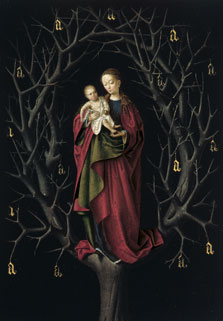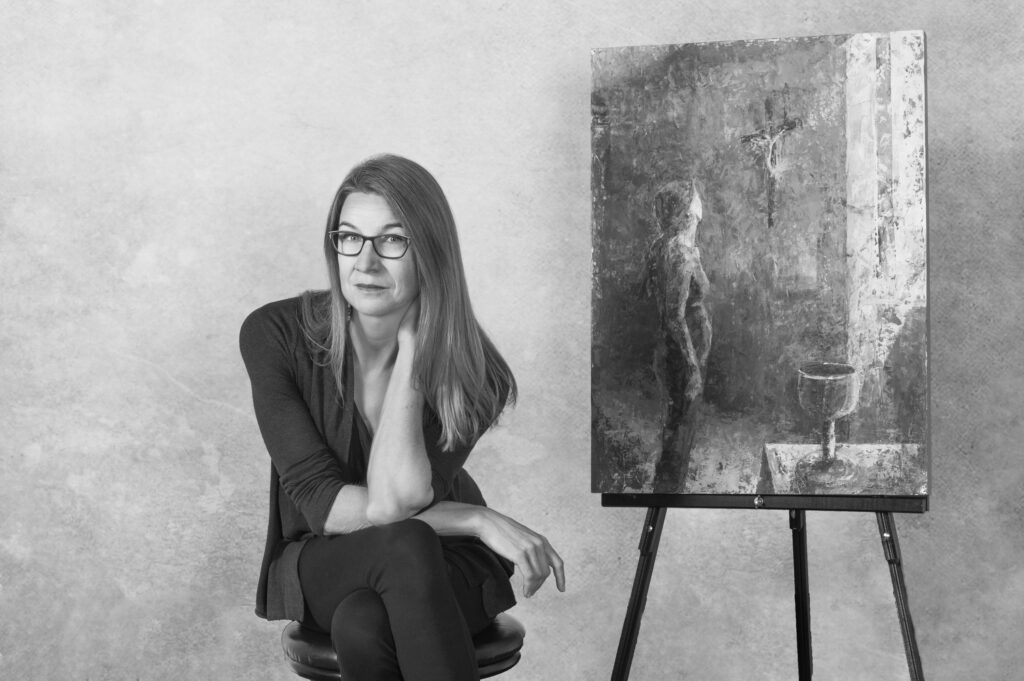
“Our Lady of the Barren Tree”, Oil on Canvas 48″ x 36″ © Michelle Arnold Paine
Cardus has just published another of my paintings in their online journal Comment. Our Lady of the Barren Tree is an image of hope: the strange beauty of winter, in which it requries faith to believe that trees and grass are only “sleeping” and will return with new life and growth.
The tree, the vine, the branches – these images evoke the memory of Eve in the garden of Eden whose disobedience eventually brought on the exile of humanity from paradise. Eve’s disobedience was eventually redeemed in the act of Mary’s obedient “May it be to me as you have said”. Through Mary’s “yes”, the shriveled tree of humanity bears fruit again, and through Christ is able to blossom into life and love again.
The title comes from this altarpiece by Petrus Christus from the 15th century. It was commissioned by the confraternity of “Our Lady of the Barren Tree” for a chapel in Bruges. When I found this image I was so thrilled by the similarities to my own painting. The image references the words of the prophet Ezekiel, “I the Lord … have dried up the green tree, and have made the dry tree to flourish” (17:24).

One of the articles in the Arts and Academy segment of this week’s journal is entitled “Beauty Resurgent“, by Daryn Henry. I appreciate the juxtaposition between the image Our Lady of the Barren Tree and the subject of the article. Beauty is making a conceptual comeback in contemporary aesthetics and theology. Henry reminds us the call to beauty must always be linked to the call to its sisters: truth and goodness. Why is this? It is because we do not want for beauty to become a mask — something which airbrushes the ugly things of the world deceiving us into false reality of “all is right with the world”. The truth is that all is not right. And goodness is the knowledge of what is right. Our Lady of the Barren Tree shows beauty that is hard-won and redemption that is costly but of a value beyond what this world can bring, and that much more beautiful because of the sacrifices given for it.
Pope Benedict XVI recently addressed artists in Rome and encouraged them in being “custodians of beauty in the world” (quoting Pope Paul VI).
“Dear friends, as artists you know well that the experience of beauty, beauty that is authentic, not merely transient or artificial, is by no means a supplementary or secondary factor in our search for meaning and happiness; the experience of beauty does not remove us from reality, on the contrary, it leads to a direct encounter with the daily reality of our lives, liberating it from darkness, transfiguring it, making it radiant and beautiful.”


